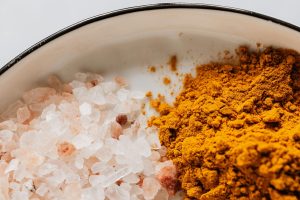Understanding the Role of Salt in Enhancing Sweetness
When we think of salt, we often think of it as a seasoning for savory dishes. However, salt also plays a crucial role in enhancing the sweetness of certain foods. This may come as a surprise to some, but there is actually a scientific explanation behind this phenomenon. In this article, we will dive into the chemistry behind why salt enhances sweetness and how it is used in cooking and food production. Understanding the role of salt in enhancing sweetness can help elevate your cooking and baking skills, so let’s explore this topic further.
The Science Behind Salt and Sweetness
The basic taste sensations that our taste buds can detect include sweet, sour, salty, bitter, and umami (or savory). When it comes to salt and sweetness, there is a unique relationship between these two tastes. While sweetness is primarily detected by the taste buds on the tip of our tongue, saltiness is detected by the taste buds on the sides of our tongue. When these two tastes are combined, they can create a more intense and pleasurable taste experience.
But how exactly does salt enhance sweetness? The answer lies in our taste bud receptors. Our taste buds contain receptors that can detect specific molecules in food. For sweetness, there are two main types of receptors: T1R2 and T1R3. These receptors are responsible for detecting the presence of sugar in our food. However, they are not only sensitive to sugar molecules, but also to the presence of sodium ions. This means that when salt is added to a food, it can activate the T1R2 and T1R3 receptors, tricking them into thinking that there is more sweetness in the food than there actually is.
This phenomenon is known as salt-induced sweetness enhancement. Essentially, salt enhances the perception of sweetness by activating our sweet taste buds. This is why a pinch of salt can enhance the flavor of sweet treats such as cookies, cakes, and candies.
The Role of Salt in Cooking
Balancing Flavors
Aside from enhancing sweetness, salt also has the ability to balance out flavors in a dish. It can help to bring out the natural flavors of other ingredients and add complexity to a dish. This is why it is an essential seasoning in most recipes. A dish can taste bland and unappetizing without the right amount of salt to balance out the flavors.
Preserving Food
Salt has been used for centuries as a method of preserving food. It works by drawing out moisture from food, which inhibits the growth of bacteria and other harmful microorganisms. This is why salt is commonly used in pickling and curing processes. The preservation properties of salt also contribute to its role in enhancing sweetness. By drawing out moisture, the flavors of certain foods can become more concentrated, making them taste sweeter.
The Use of Salt in Food Production
Salt is not only used in cooking and baking, but it is also widely used in the food production industry. It is used as a natural preservative and flavor enhancer in a wide range of processed foods. For example, it is commonly added to bread and cheese to improve texture and flavor. In addition, salt is also found in many sweet products such as chocolate and caramel, where it plays a crucial role in balancing flavors and enhancing natural sweetness.
Tips for Using Salt to Enhance Sweetness
If you want to experiment with using salt to enhance sweetness in your cooking and baking, here are a few tips to keep in mind:
Use the Right Type of Salt
Not all salts are created equal. Different types of salt have different flavors and textures, which can impact the end result of your dish. When it comes to enhancing sweetness, it is best to use a fine-grained salt such as table salt or sea salt. These types of salt will dissolve quickly and distribute evenly, ensuring that the sweetness is enhanced throughout the dish.
Start Small and Adjust to Taste
When adding salt to sweet dishes, it’s important to start with a small amount and gradually add more if needed. You don’t want to overpower the natural sweetness of the food with salt. Taste as you go and adjust accordingly.
Pair with Acidic Ingredients
While salt can help to enhance sweetness, pairing it with acidic ingredients can further enhance its effects. The acid can help to activate the taste buds responsible for detecting sweetness, making the overall flavor more intense.
Conclusion
Salt may not be the first thing that comes to mind when thinking of sweet foods, but its role in enhancing sweetness is undeniable. Its ability to balance flavors and activate our sweet taste buds makes it an essential ingredient in cooking and food production. Hopefully, this article has shed some light on the science behind salt and sweetness, and inspired you to use salt in new and creative ways in your culinary adventures.











